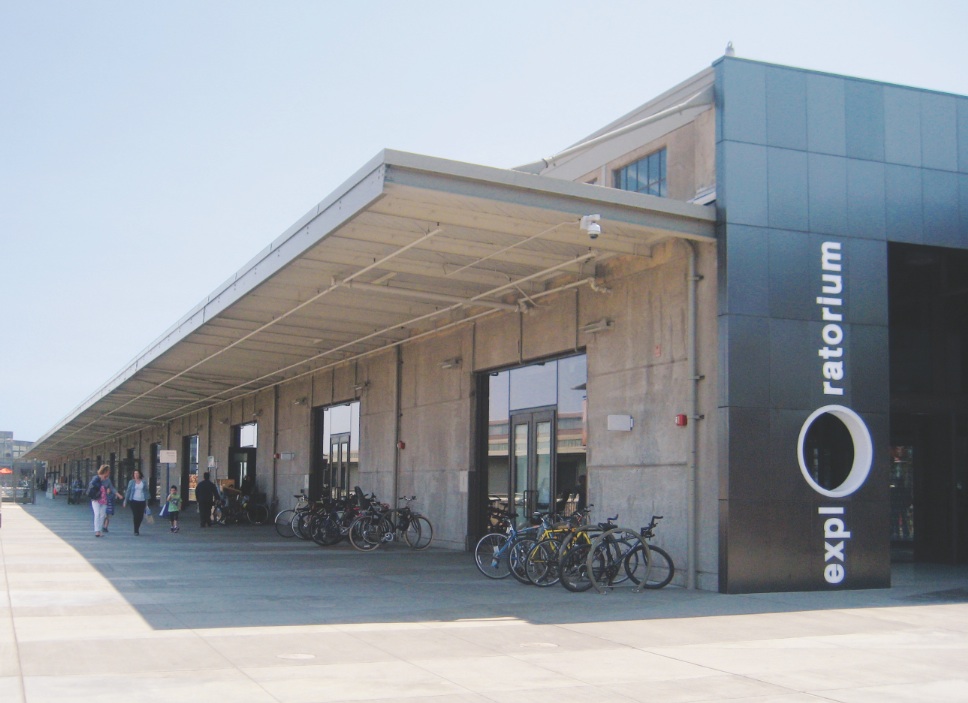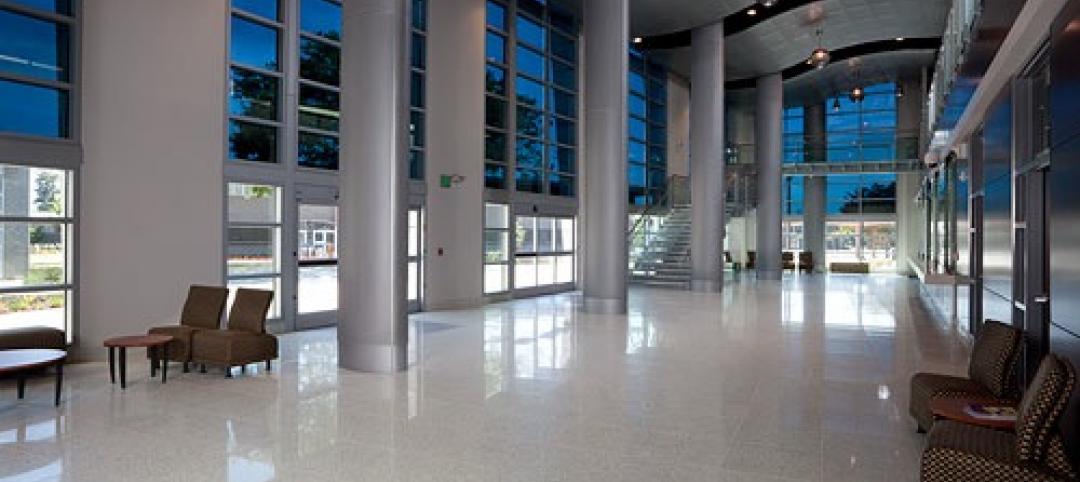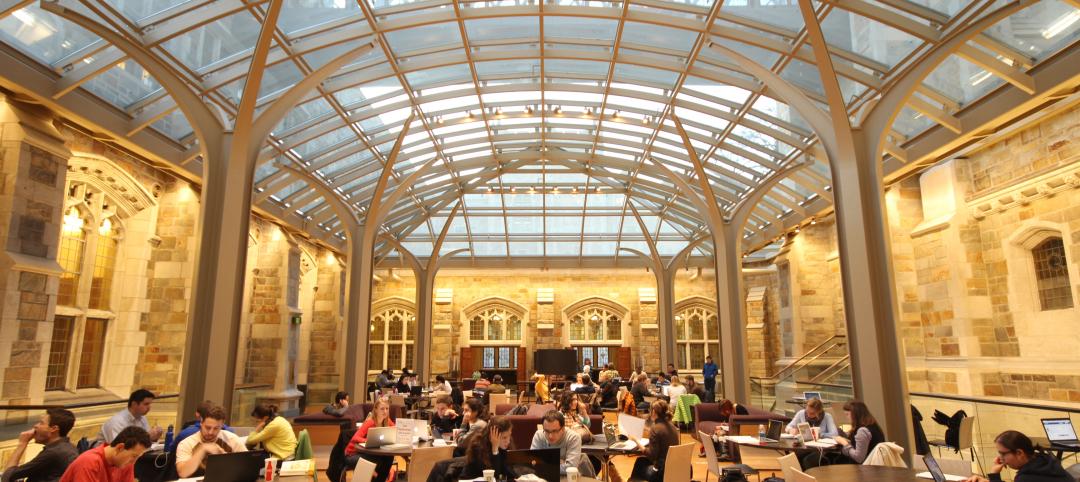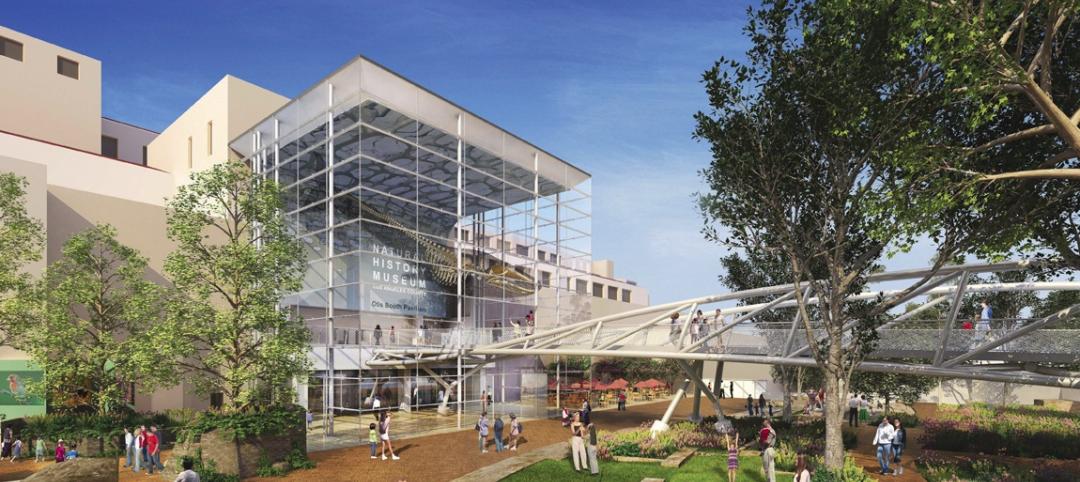Editor's note: This is a sponsored article. All text and images were provided by the sponsor company.
Project name: The Exploratorium in San Francisco
Architect: EHDD
General Contractor: Nibbi Brothers General Contractors
Glazing Contractor: Architectural Glass and Aluminum
Products used: SuperLite II-XL 45 IGU in SAFTIfire HM Framing
The newly-opened Exploratorium has brought energy and excitement to the city’s bustling waterfront. EHDD transformed the historic Pier 15, built in 1915, to a 330,000 square foot indoor and outdoor campus, being touted as the largest net-zero building in the city and potentially the largest net-zero museum in the world.
EHDD kept the original structure and concrete cladding of the building but removed most of the loading dock doors on the north and south sides of the pier, replacing them with glazed door assemblies in order to bring in natural light and provide convenient access between the inside space and the outdoor exhibits. By using glass, the architects were also able to make a connection to the outdoors, with the south side offering views of the Bay Bridge and north side offering views of the San Francisco skyline – putting the city itself and its iconic landmarks on display.
However, the location of the Exploratorium’s new home posed a unique challenge. “The exterior portions of the piers are designed to function similar to rated interior egress corridors in the event of a fire,” says Katherine Miller, the project architect for the Exploratorium. Not wanting to sacrifice daylight and views, the designers opted to use fire rated glass for the exterior doors so that people evacuating the site via the piers will be protected in case a fire breaks out from inside the building.
SAFTI FIRST supplied a total of 19 pairs of 45-minute steel doors – 11 pairs on north side and 8 pairs on the south side – using SuperLite II-XL 45 IGU in SAFTIfire HM Framing. The SuperLite II-XL 45 glazing was insulated with tempered low-e glazing on the #2 surface for energy efficiency. The frames were painted to match the adjacent non-rated systems.
8 pairs of SuperLite II-XL 45 IGU in HM Door Framing on the south side provides easy access to the outdoor exhibits and views of the Bay Bridge.
SuperLite II-XL 45 is a clear, fire resistive glazing product tested to ASTM E-119/NFPA 251/UL 263 with hose stream and meets NFPA 252/257 for use in door and window assemblies. It meets CPSC Cat. II impact safety and is available in large sizes, which was critical because some of the doors had a day light opening of 97 inches high.
“SAFTI FIRST was able to achieve the desired glass heights, and was less expensive than other options,” adds Katherine. SuperLite II-XL 45 has the largest sizes for clear 45 minute fire and safety rated glazing, with a maximum clear view area of 4,952 square inches and a maximum clear view height or width 124 inches. It is made here in the USA at SAFTI FIRST’s manufacturing facility in California, ensuring competitive pricing versus fire resistive multilaminates or fire protective filmed or laminated ceramics, which are either imported from Europe of Asia.
Aside from large sizes and competitive pricing, SuperLite II-XL 45 was chosen because “it was a good color match to the adjacent clear low-e coated glass,” says Katherine. SuperLite II-XL 45 has superior optical clarity and does not have any amber tints typically seen in fire rated ceramics.
Further expansion is planned for the neighboring Pier 17. For now, inquisitive minds of any age can satisfy their curiosities at the Exploratorium’s new spectacular – and safe – space along the embarcadero.
Related Stories
| Mar 13, 2012
Commercial glazer Harmon expanding into Texas
Company expanding into the Texas market with a new office in Dallas and a satellite facility in Austin.
| Feb 16, 2012
Summit Design + Build begins build-out for Emmi Solutions in Chicago
The new headquarters will total 20,455 sq. ft. and feature a loft-style space with exposed masonry and mechanical systems, 15 foot clear ceilings, two large rooftop skylights and private offices with full glass partition walls.
| Feb 13, 2012
Center for Sustainable Building Research launches CommercialWindows.org
Resource aims at reducing commercial operating costs and energy consumption.
| Feb 2, 2012
Fire rated glazing helps historic university preserve its past
When the University embarked on its first major addition since the opening of Hutchins Hall in 1933, preserving the Collegiate Gothic-style architecture was of utmost importance.
| Dec 10, 2011
Turning Balconies Outside In
Operable glass balcony glazing systems provide solution to increase usable space in residential and commercial structures.
| Dec 5, 2011
Fraser Brown MacKenna wins Green Gown Award
Working closely with staff at Queen Mary University of London, MEP Engineers Mott MacDonald, Cost Consultants Burnley Wilson Fish and main contractor Charter Construction, we developed a three-fold solution for the sustainable retrofit of the building.
| May 4, 2011
SAFTI FIRST to debut free apps for iPhone, iPod Touch, and iPad at AIA Convention
SAFTI FIRST, manufacturer of fire rated glass and framing solutions, will debut its mySAFTI app, the first interactive design tool that takes the guesswork out of choosing the correct fire rated glass product, at the AIA National Convention in New Orleans, May 12-14. Visit booth1634.
| Apr 19, 2011
Is a building sustainable if it kills birds?
Migratory birds were flying into the windows and falling, dead or injured, to the foot of the LEED-Platinum FBI building in Chicago. The FBI building isn't the only LEED-certified structure to cause problems for migratory birds, however. Some of the more than 33,000 LEED-certified buildings in the U.S. use large amounts of glass to bring in natural light and save on energy—and all that glass can confuse birds.
| Apr 14, 2011
How AEC Professionals Choose Windows and Doors
Window and door systems need to perform. Respondents to our annual window and door survey overwhelmingly reported that performance, weather resistance, durability, and quality were key reasons a particular window or door was specified.
| Apr 12, 2011
Entrance pavilion adds subtle style to Natural History Museum of Los Angeles
A $13 million gift from the Otis Booth Foundation is funding a new entrance pavilion at the Natural History Museum of Los Angeles County. CO Architects, Los Angeles, is designing the frameless structure with an energy-efficient curtain wall, vertical suspension rods, and horizontal knife plates to make it as transparent as possible.
















